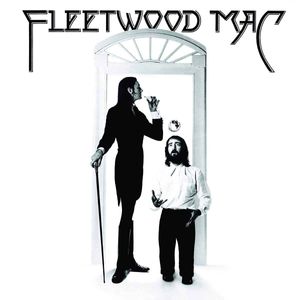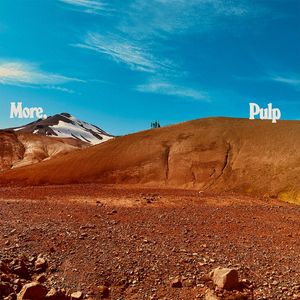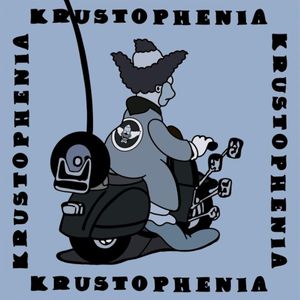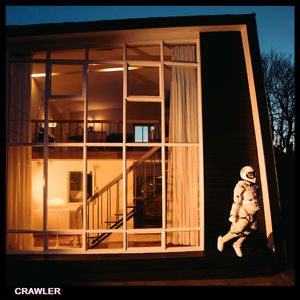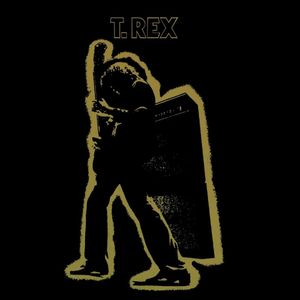Mr. Tambourine Fan: Bob Dylan’s studio albums ranked
I started listening to Bob Dylan about four years ago, having put a few of his albums (pilfered from my Dad’s collection) onto my iPod Classic before a trip through Eastern Europe. It didn’t feel pretentious at the time, I swear.
I think Blonde On Blonde was the first album I tried, and I found it to be pretty difficult listening. Bad singing, abrasive harmonica, overly long songs, etc. For some reason I persevered, and it wasn’t long before I was searching for Dylan box-sets on Amazon (still the best purchase I ever made).
There aren’t many musical discographies quite so gargantuan as Bob Dylan’s, containing an almighty 38 studio albums. On top of that, he’s put out 15 live albums (comprising 68 CDs), and 14 volumes of his Bootleg Series (that’s another 58 CDs). It turns out you can have too much of a good thing.
Anyway, here are Dylan’s 38 studio albums ranked from worst to best. I’m fairly sure most of this ranking could change tomorrow, but #38 and #1 are set in stone.
38. Down in the Groove (1988)

Not many people have heard of this one, and rightly so. It’s Dylan at his most disappointing, following up 1987’s (mostly) mediocre Knocked Out Loaded with something even worse. He’d clearly decided to stop trying. The only track worthy of note is the jaunty “Silvio”, co-written with The Grateful Dead. It’s fun and features several ‘woop-woops’, but it’s not very Dylan.
37. Triplicate (2017)

After releasing two whole albums of syrupy Sinatra covers that nobody really wanted, Dylan thought he’d release a triple album with even more syrup. It’s an overwhelmingly long record (30 songs), and the plodding instrumentation doesn’t do much to keep listeners engaged. Triplicate’s opening track, “I Guess I’ll Have To Change My Plans”, is pleasantly upbeat, but after that it’s a dreary road ahead.
36. Fallen Angels (2016)

The second album of Dylan’s ‘Sinatra period’ is a marginally more interesting affair, but it’s lacking a lot of inspiration. Fallen Angels beats Triplicate only by being less tediously long. “Skylark” features some nice guitar work, and “That Old Black Magic” injects some energy at the end, but the album is little more than an elderly man indulging himself.
35. Christmas in the Heart (2009)

Bob Dylan singing Christmas songs just seems wrong. People generally assumed that this album of hymns, carols, and popular festive songs was ironic, but Dylan insisted otherwise. Although hard to believe, apparently he was actually feeling genuinely merry - and generous too, giving 100% of his royalties to various homeless charities. Dylan growls his way through the record, his voice often contrasting terribly with the angelic chorus of backing singers. The only song worth listening to is “Must Be Santa”, which is just jolly good Christmas fun.
34. Under the Red Sky (1990)
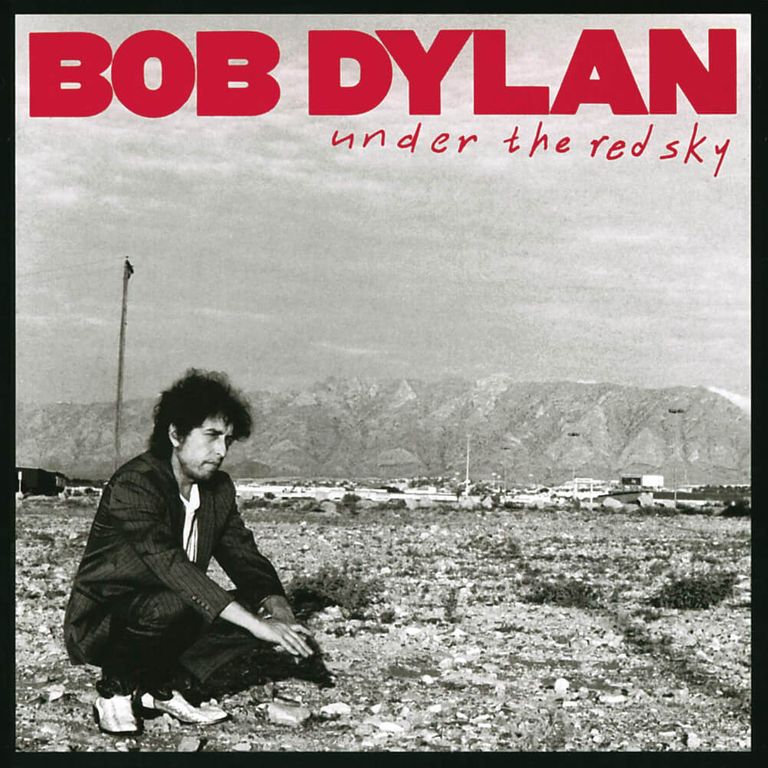
After 1989’s Oh Mercy, which was hailed as something of a comeback, fans expected a lot more from its follow-up. The most striking thing about Under The Red Sky is its weirdness; it’s dedicated to his four-year-old daughter (“Gabby Goo Goo”), it’s full of unexpected cameos (including Slash and Elton John), and half the songs feel like nursery rhymes. The opening track, “Wiggle Wiggle”, features what might be Dylan’s worst ever lyric: ‘Wiggle wiggle wiggle like a bowl of soup’. Under The Red Sky’s better points lie in the organ-driven “Handy Dandy” and the up-tempo “God Knows”.
33. Dylan (1973)

This self-titled album was compiled and issued with no input from Dylan himself, and it’s quite easy to tell. He had recently left Columbia Records for pastures new, leaving behind a bunch of half-hearted covers that the label decided to monetize. It’s a nice collection of songs, although never anything more than that. “Sarah Jane” and “Mr. Bojangles” are fine covers, but other songs (e.g. “Big Yellow Taxi”) make you realise why this material was shelved in the first place. Perhaps Dylan’s multicoloured rainbow hair on the album’s cover is the only real highlight here.
32. Empire Burlesque (1985)

This was when the Eighties really got to Dylan. He took a handful of half-decent songs and almost ruined them with crass, overblown production. The album opener, “Tight Connection To My Heart”, is a fantastic, summery number, but the record is mostly a disappointment. Bizarrely, the album closer, “Dark Eyes”, is a purely acoustic song, breaking away from the rest of the album’s nauseating production. It’s a plaintive, stripped-back tune that shows you just what Empire Burlesque could have been.
31. Knocked Out Loaded (1986)
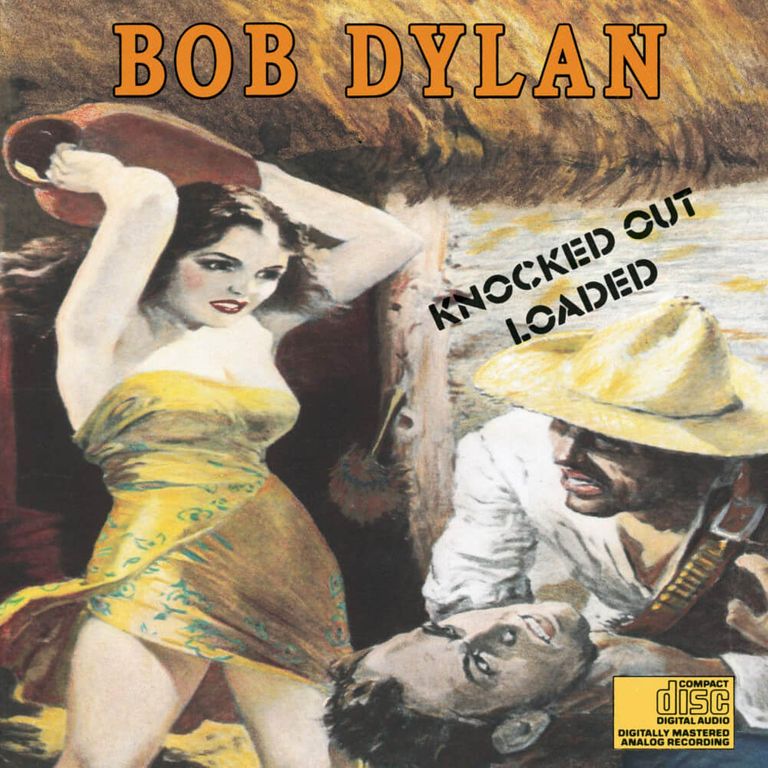
To put it simply, Knocked Out Loaded is good for one track; the 11-minute epic “Brownsville Girl”. Co-written with playwright Sam Sheppard, it might be Dylan’s best song from the 1980s (competing with 1983’s “Blind Willie McTell”). It’s as overblown as anything from Empire Burlesque, but in “Brownsville Girl” the contrived gusto feels essential, from the high-powered brass and energetic backing singers to Dylan’s vivid, melodramatic lyrics. In his swooping visions of vast, sunbaked deserts, faded car seat covers, and fraught love, Dylan creates some unforgettable images. Elsewhere on the album, the music is fairly routine and indifferent (including three covers). “Knocked Out Loaded” is ultimately one great song with a lot of baggage.
30. Pat Garrett and Billy the Kid (1973)
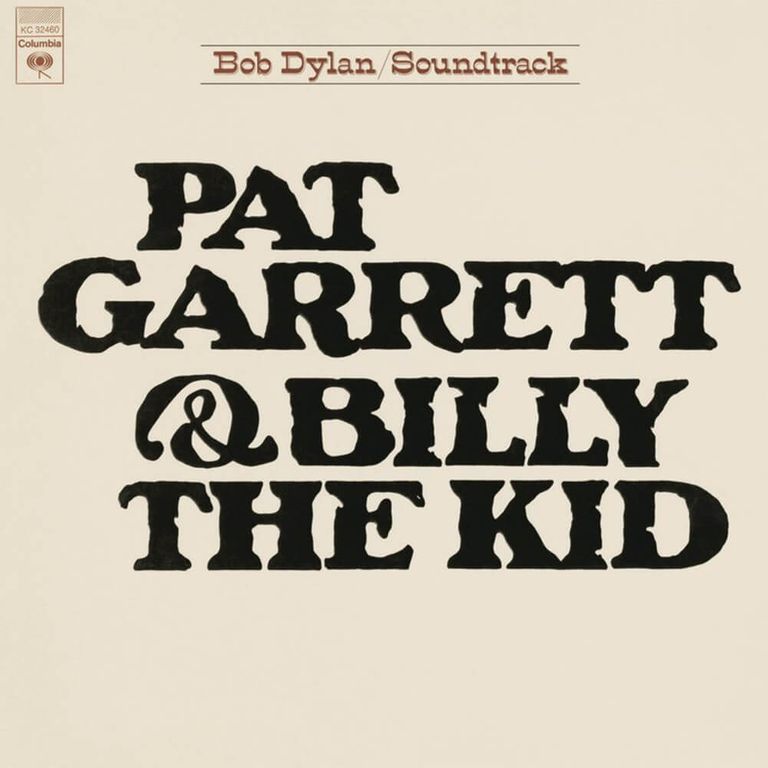
Speaking of one-song albums, no Dylan record is more reliant on one track than Pat Garrett and Billy the Kid, his half-instrumental soundtrack for the film of the same name. Amongst some pleasant flute music and uninspiringly-named cowboy songs (“Billy 1”, “Billy 4”, “Billy 7”), there is “Knockin’ On Heaven’s Door”. During Dylan’s fairly unexceptional period between the late ‘60s and mid ‘70s, this song stands out as a bafflingly brilliant outlier. Guns N’ Roses tried their best to make it their own, but the understated, tired vocal delivery in Dylan’s original is impossible to beat (yes, that’s right: an uncoverable Dylan song).
29. Shadows in the Night (2015)

Shadows in the Night comprises ten Frank Sinatra covers, although Dylan saw things differently, claiming: ‘I don’t see myself as covering these songs in any way. They’ve been covered enough. Buried, as a matter of fact. What me and my band are basically doing is uncovering them’. Irrespective of whether they are covers or not (they are covers), Dylan does an excellent job; the weariness (and surprising tunefulness) of his voice, combined with the record’s gorgeous instrumentation, creates a reflective, late-night atmosphere. What the ten songs lack in punch, they make up for in serenity — particularly “Stay With Me”, “Some Enchanted Evening”, and the closing “That Lucky Old Sun”.
28. Good As I Been to You (1992)
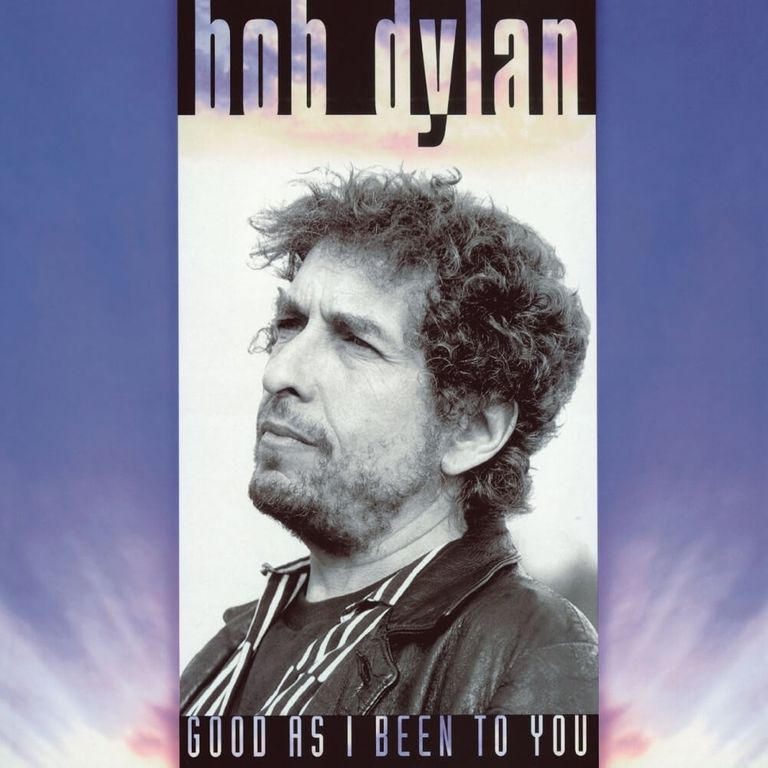
Dylan’s first solo acoustic album since 1964 was never going to be quite as good as Another Side of Bob Dylan, but it was a respectable effort. The stripped-back vibes allowed Dylan to demonstrate his underrated guitar work, which is actually quite good. With its mixture of traditional British and Irish folk songs and bluegrass standards, the ambitions of *Good As I Been To You *are fairly modest, but the performances are solid. The album probably peaks at “Canadee-i-o”, an emotional tale of one woman who masquerades as a sailorman in order to travel to Canada, which Dylan sings quite beautifully.
27. Saved (1980)

Saved is the middle album in Dylan’s ‘Christian trilogy’, which is unfairly seen as a black mark on his career (it’s dark grey, at worst). There are exceptional songs on each of the three albums - it can just be difficult to spot them amidst all the evangelical chaff. In the case of Saved, perhaps Dylan’s most overtly Christian album, the highlight is undoubtedly “Pressing On”, a triumphant, stirring gospel number that builds and builds. “Covenant Woman” is also worth a listen, but beyond that it’s a mostly unremarkable record.
26. Together Through Life (2009)
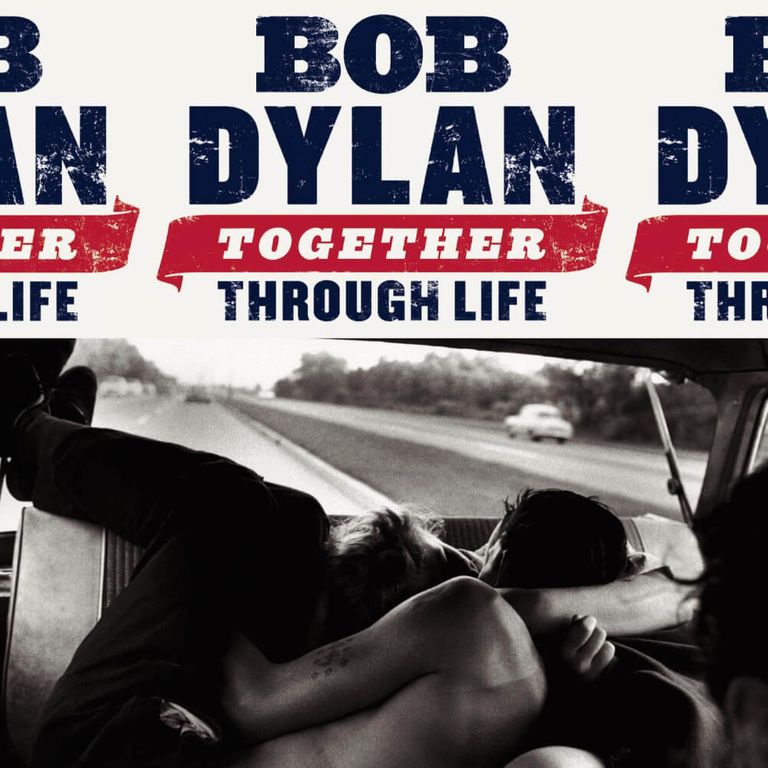
‘You are as whorish as ever’, Dylan tenderly tells his addressee in “I Feel A Change Comin’ On”, the standout track on Together Through Life. While it’s certainly the weakest of Dylan’s golden run of late albums (starting with 1997’s Time Out of Mind and concluding with 2012’s Tempest), it’s still a decent offering.
The album comprises a bluesy bunch of songs, co-written with The Grateful Dead’s Robert Hunter, and they’re all given the right treatment by Dylan’s suitably gravelly voice. Things also get pretty lusty on this record — check out “Shake Shake Mama” for evidence.
25. World Gone Wrong (1993)
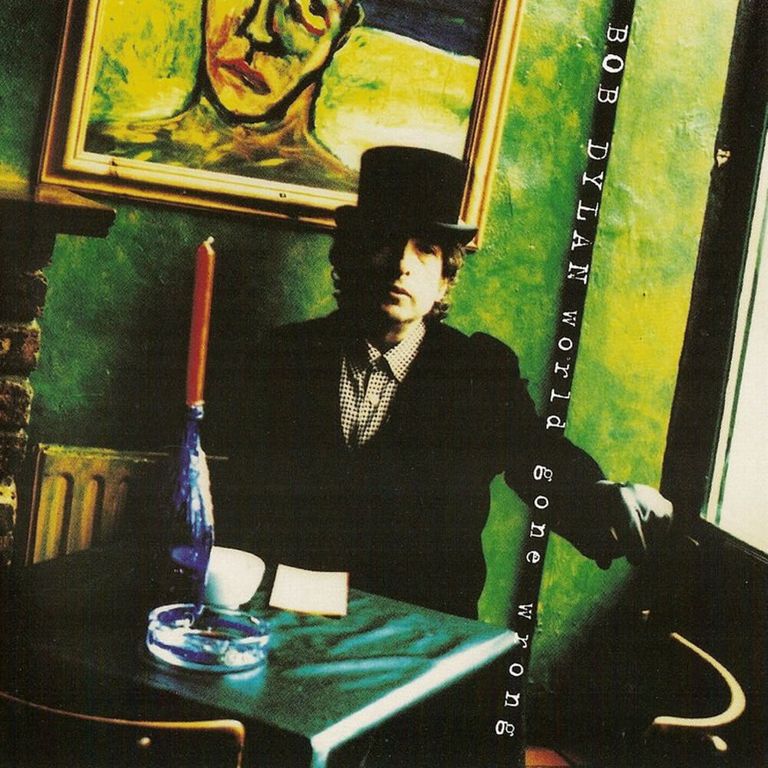
Dylan’s follow-up to Good As I Been To You was another album of traditional folk songs, but it comes with a little more depth than its predecessor. The themes are darker, the musical textures are richer, and Dylan’s liner notes (probably his best since the ‘60s) cite possible sources for every song.
For the most part, World Gone Wrong is a beautifully sad record, and it was probably Dylan’s most consistent work since the early ‘80s. The album’s centrepiece, “Delia”, features a simple but exquisite refrain on acoustic guitar, and some fairly desolate words (‘all the friends I ever had are gone’).
24. Slow Train Coming (1979)
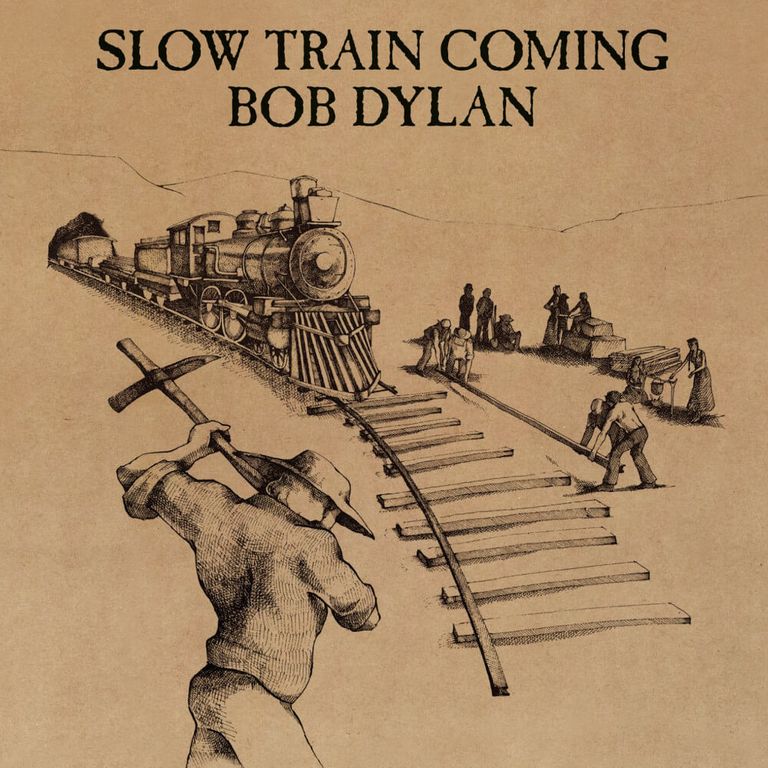
Slow Train Coming certainly surprised a lot of people, launching Dylan’s ‘Christian trilogy’ with serious enthusiasm. The fervent evangelism of the lyrics can put listeners off (you’re made to feel very bad for not believing), but there’s a small handful of fantastic songs on this album.
The record peaks early with “Precious Angel”, which features some gorgeous high-pitched twiddling on the guitar by Mark Knopfler, six verses of vivid lyrics, a little bit of brass, and an uplifting chorus. The closing track, “When He Returns”, is another beauty, but the remaining songs aren’t much to write home about (especially the extremely dull “Man Gave Names to All The Animals”).
23. Shot of Love (1981)
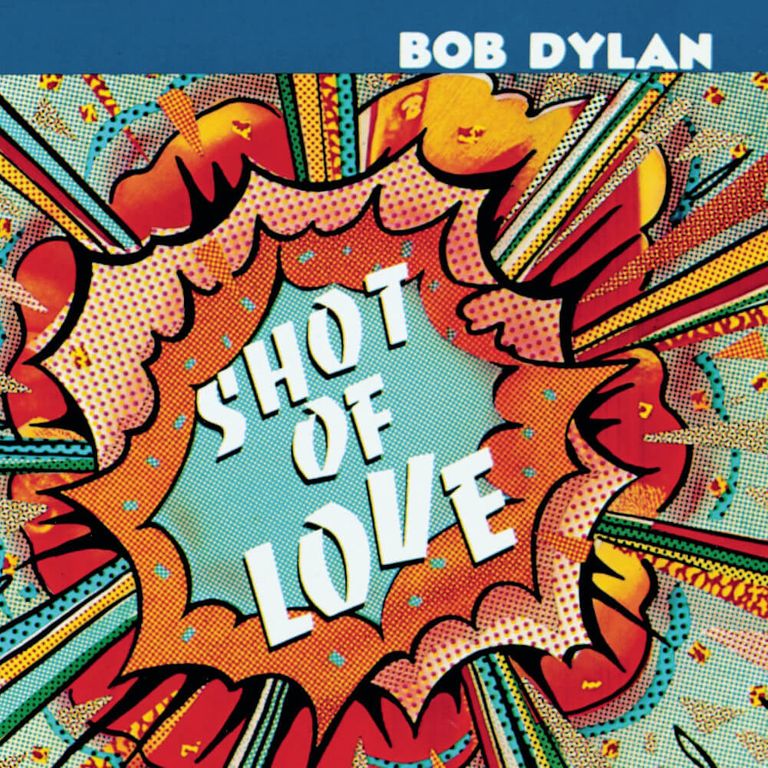
The third instalment of Dylan’s ‘Christian trilogy’ is undoubtedly the best; it’s more consistent, more eclectic, and Dylan actually sounds like he’s enjoying himself. There’s muscle and swagger to the music here, something that barely exists on *Slow Train Coming *or Saved. It’s an album of hard drumming, big choruses, and colourful lyrics (mixed in with a few softer tracks).
One particular highlight is “The Groom’s Still Waiting at the Altar”, where Dylan experiments ambitiously with the number of syllables he can fit into each line (he tries spectacularly hard). The *Shot of Love *sessions produced outtakes that really shouldn’t have been left behind, including the truly spectacular “Caribbean Wind”.
22. Self Portrait (1970)
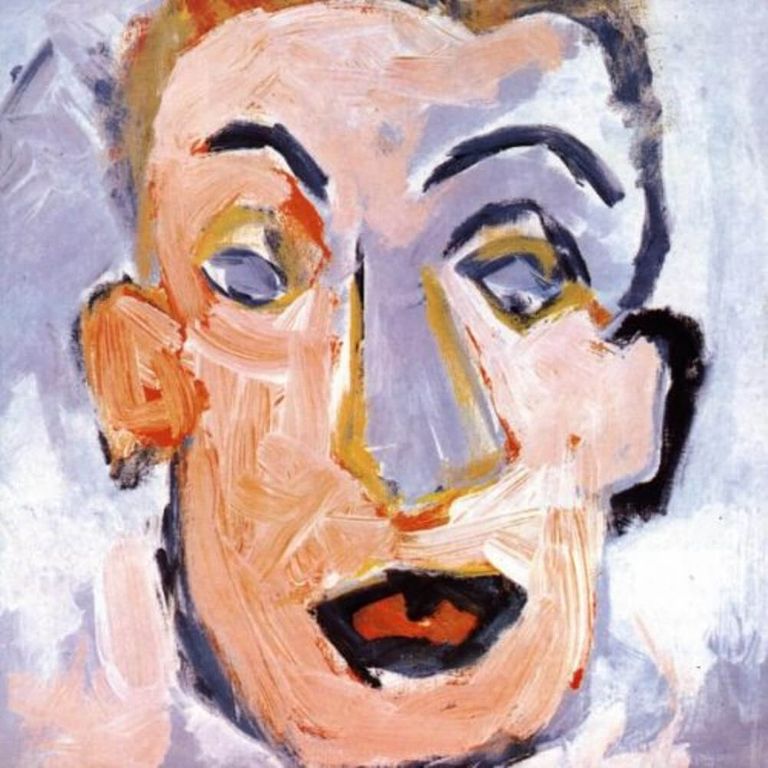
What do you do when you need to get rid of your maniacally obsessive fanbase? You release an obtusely long, 24-song album full of weird instrumentals and covers that alienates everyone, of course. It certainly worked in the short term (‘What is this shit?’, wrote Greil Marcus at the time), but over the years Self Portrait has become a cult classic amongst Dylan fans — the session outtakes even got their own volume in the official Bob Dylan Bootleg Series.
Bob should have known better, really. There’s certainly a fair amount of mediocrity to navigate (you could easily trim the 24 songs down to 12) but, as with most Dylan records, you’ll still find a few gems. The folky “Alberta #1” and “Alberta #2” bookend the album nicely, Dylan’s cover of “Let It Be Me” is gorgeous, the 1969 live version of “Quinn The Eskimo” is fun, and the strings in “Copper Kettle” are beautiful.
21. Tempest (2012)

With a name like Tempest, people quite reasonably assumed that this might have been Dylan’s final album (given that The Tempest was the name of Shakespeare’s final play), but the subsequent splurge of Sinatra cover albums has put that charming idea to bed. Dylan himself rebuffed the idea with a bit of grammatical pedantry, pointing out that his album is not called The Tempest but ‘just plain Tempest‘.
The album features Dylan’s roughest vocal performances (the opening verse of “Pay In Blood” could reduce a small child to tears), but for most of the album this gruffness matches the music perfectly. The epic, 14-minute title track is a highlight, narrating the story of the RMS Titanic in 45 evocative verses, intertwined with some lovely violin solos.
20. Modern Times (2006)

Modern Times continued Dylan’s late purple patch, which began with 1997’s Time Out of Mind. The irony of this record is that there isn’t much that’s modern about any of the songs, with many critics having found umpteen uncredited uses of melodies from traditional songs, and words from poets as old as Ovid.
Nevertheless, Dylan’s never been a stranger to lifting from old source material, and Modern Times is a first-class collection of jazz-infused folk (or folk-infused jazz, take your pick). “Thunder On The Mountain” kicks off proceedings with style, simmering for a few seconds before launching into an irresistible beat. It’s probably the best song on the album, and the lyrics are wonderfully weird (‘I’m wondering where in the world Alicia Keys could be’).
19. Bob Dylan (1962)

Considering Dylan’s reputation for great songwriting, it seems strange that his debut album should contain just two original compositions: “Talkin’ New York” and “Song To Woody”. Dylan moves through 11 traditional folk songs with infectious enthusiasm, as if he’s planning on making a career out of it.
The harmonica playing is breathlessly energetic (check out “You’re No Good” and “Gospel Plow”), and the singing sometimes lapses into yelping. Most of the songs are strung together by an intense focus on death and burials, which makes for some cheery listening. “Baby, Let Me Follow You Down” is probably the best performance on the album, featuring some of Dylan’s finest fingerpicking and smoothest harmonica.
18. Oh Mercy (1989)

The one benefit of having multiple career dips is that they set you up for multiple career comebacks. After Dylan’s ‘return to form’ with Infidels in 1983, he went on another spree of average albums until Oh Mercy brought it to a halt. Dylan teamed up with U2 producer Daniel Lanois to create a record that took everyone by surprise - because it was good.
Oh Mercy certainly didn’t break any new ground, but it gave fans ten original songs that sounded like Dylan was putting in the effort again. Lanois’s production gives the album a dark, brooding atmosphere, something Dylan himself quite accurately described as ‘swampy’. Check out “Most of the Time” for the best bassline in a Dylan song.
17. John Wesley Harding (1967)
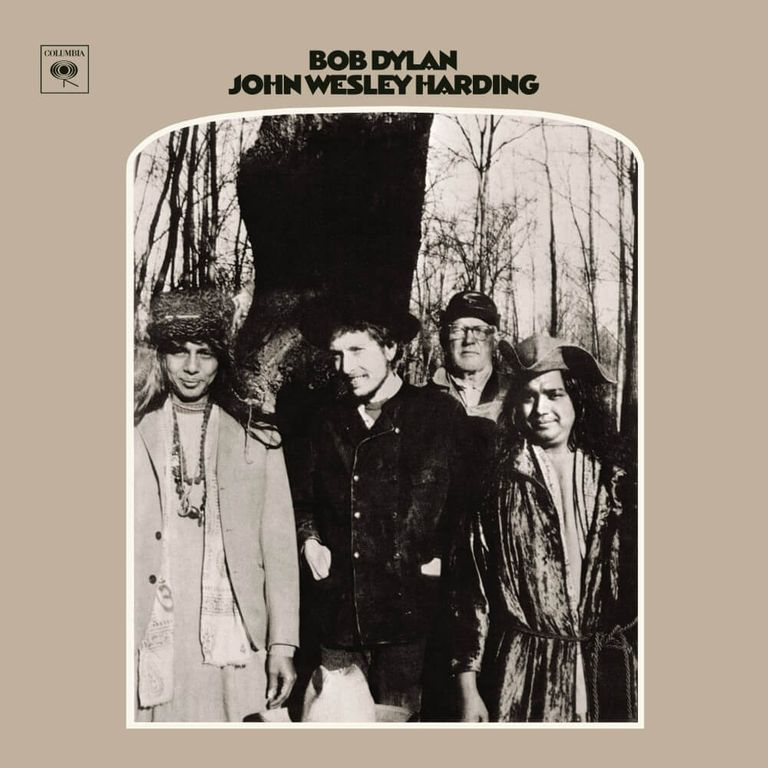
After a bad motorcycle crash in 1966, Dylan’s music took a serious stylistic turn. In stark contrast to his trio of mid-60s rock albums, John Wesley Harding is austere and stripped back. Dylan sounds tired, his voice is strained, and the instrumentation is sparse. The songs themselves are a mixed bag, ranging from the fairly forgettable (“Down Along The Cove”) to the downright magnificent (“All Along The Watchtower”). Of course, Jimi Hendrix quickly identified the best song on the album, recording his dazzling version of “All Along The Watchtower” less than a month after hearing it. It’s got to be the greatest Dylan cover of all time (and there’s a lot of competition).
16. Nashville Skyline (1969)

This record certainly gave fans a shock. After almost a decade of rock and folk, Dylan produced an album of lovey-dovey country music. To make things even weirder, he replaced his trademark, sandpapery drawl with a soft croon, which suited the bluegrass sound but certainly didn’t suit the man himself.
At just 26 minutes, Nashville Skyline is Dylan’s shortest album, comprising nine love songs (including a reworking of 1962’s “Girl From The North Country” as a duet with Johnny Cash), and a jaunty instrumental. Of course, the big standout track here is “Lay Lady Lay”, originally intended for the Midnight Cowboy soundtrack but submitted too late. It’s one of Dylan’s most perfect singles, combining exquisite pedal steel guitar and cowbell percussion with some masterfully simple songwriting.
15. The Basement Tapes (1975)
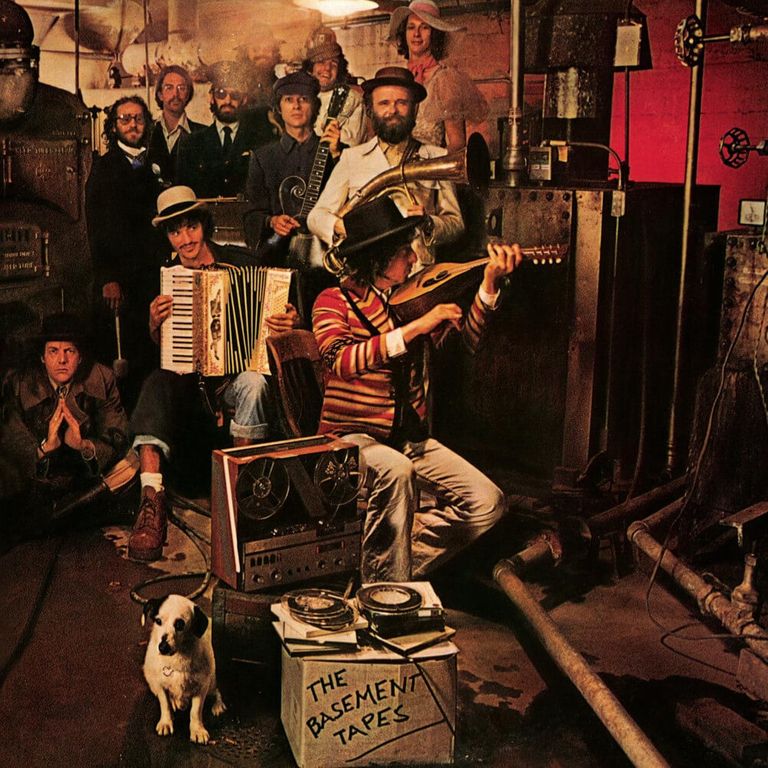
When four exceptional musicians (most of the Band) came to stay with an exceptional songwriter (Bob Dylan) in his home in Woodstock in 1967, something good was bound to happen. The result was a sprawling, raucous, laughter-filled, genre-spanning treasure chest of more than 100 songs, comprising rootsy blues numbers, traditional folk ballads, and some superb original compositions.
It’s a relaxed and improvisational affair, with loose guitar playing, impromptu harmonies, and lyrics that switch randomly between the silly and the surreal. Amidst a wealth of outstanding tracks, Dylan wrote two of his greatest choruses, featured in the feel-good singalongs “Million Dollar Bash” and “You Ain’t Goin’ Nowhere”.
14. Planet Waves (1974)
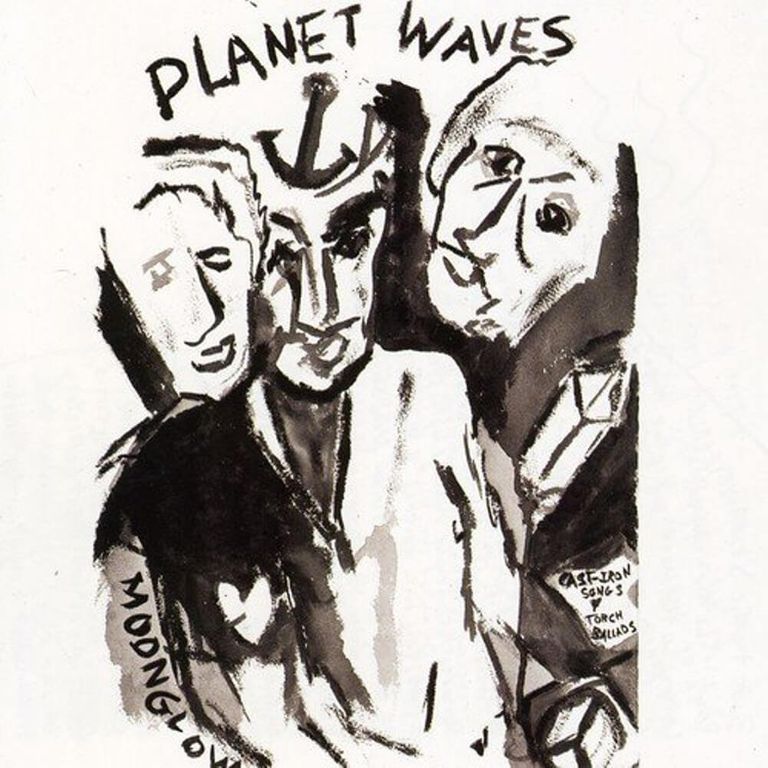
Following on from a substandard couple of albums, Planet Waves really stepped things up. Dylan reunited with the Band to produce a proper rock record (his first since the mid-60s), filling his songs with electric guitar, organ, and drums. What’s more, Dylan sang like he meant it, particularly in the two versions of “Forever Young” (one’s slow, one’s fast) that come consecutively in the middle of the record. The two tracks compete to be the best on the album — and you might say they both win, depending on what mood you’re in.
Dylan almost left the slow version of “Forever Young” off the album when his friend heard it and accused him of having turned mushy. Yes, it’s mushy, but sometimes that’s what the people want; Planet Waves was Dylan’s first album to reach number one on the US Billboard chart.
13. Infidels (1983)

Infidels was yet another ‘return to form’ for Dylan, following on from his unpopular Christian trilogy. He made a decided move away from evangelizing, which happily coincided with some of his best songwriting since the mid-70s. What’s more, after struggling to find a producer for the album (Bowie, Zappa, and Costello were all unavailable), Dylan got his hands on Mark Knopfler, whose contributions on guitar would become a big part of the record.
However, it’s actually the work of Mick Taylor that provides the album highlight, his brilliant flourishes on guitar combining with Dylan’s vivid, lyrical brilliance in “I And I”. Bafflingly, Dylan couldn’t find space on Infidels for “Blind Willie McTell”, an atmospheric, piano-driven number that deserves a space on any Dylan album. It’s one of his greatest compositions, and nobody’s sure why it got left behind.
12. Love and Theft (2001)
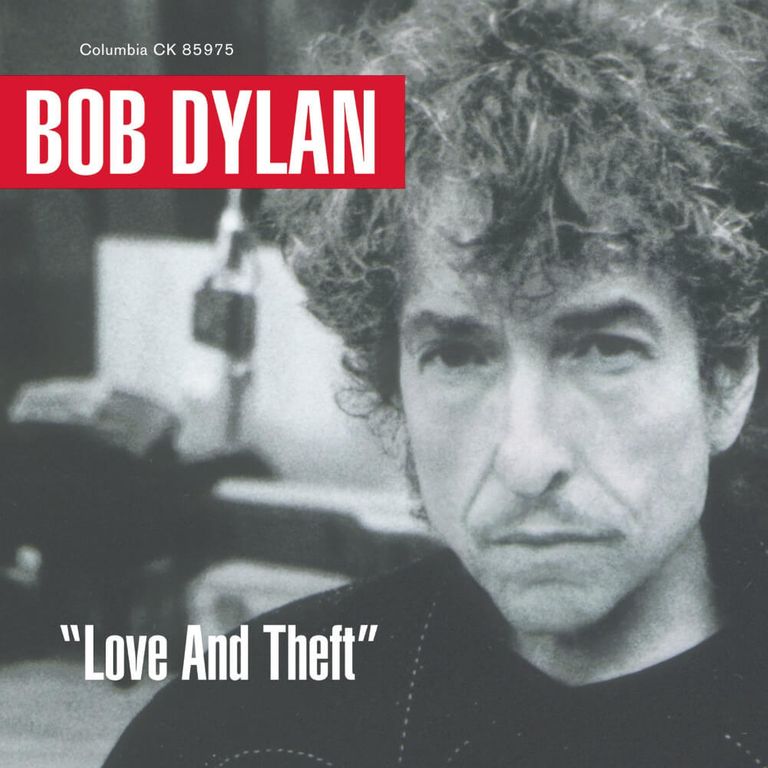
Dylan started the millennium with a bang; Love and Theft really packs a punch. During a press conference in Rome shortly before the album’s release, a reporter told Dylan that it was ‘the first Dylan album you can dance to’, to which he replied: ‘Oh, I’m sorry’. People weren’t ready for the raunchy swagger of Love and Theft, especially given the largely slow, reflective nature of its predecessor (1997’s Time Out Of Mind), but nobody was complaining, either.
The songs are mostly a mix of electric blues, roots rock, and punchy folk (with a bit of jazz thrown in). Amidst the record’s noise and fun (“Lonesome Day Blues” has both of these in abundance), there is the magnificent “Mississippi”; a jangly, five-minute number that Dylan rescued from his *Time Out Of Mind *outtakes. The song ranked a respectable 260th on Rolling Stone’s list of the ‘500 Greatest Songs Of All Time’ - not bad for a man who was supposedly 25 years past his prime.
11. New Morning (1970)

New Morning is probably Dylan’s happiest album. It marked a shift to a more ‘conventional’ style of songwriting after the silliness of Self Portrait, and Dylan sounds quite cheery about the whole thing. The music has a soft, inoffensive sound, and Dylan’s singing is the least contrived of his career — no nasal drawl or soft croon, just straight-down-the-middle singing.
Most of the songs are simple, piano-backed pieces (sometimes piano is the only backing you get), but it’s when the whole band comes together that the album really enters its stride – particularly in the uplifting title track, and the excellent “The Man In Me”. There’s a time and a place for Dylan’s challenging side, but it’s not here.
10. Time Out of Mind (1997)
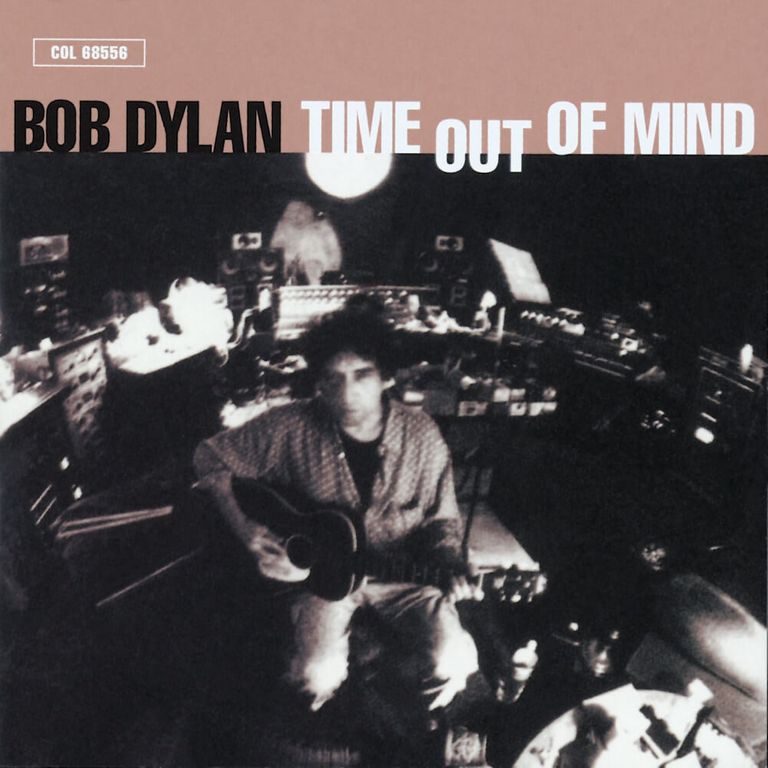
The artistic comeback of all artistic comebacks, Time Out Of Mind showed the music world that Dylan still had it. Joining up once again with U2 producer Daniel Lanois, Dylan put out his best record for over 20 years. From the menacing “Lovesick” to the vast, 16-minute “Highlands” (Dylan’s longest song), there isn’t a weak track on this record. Lanois’s trademark ‘swampy’ production washes over every song, blending together distant guitar sounds and muffled drum beats seamlessly behind Dylan’s voice.
Amidst all the great songs, there is one masterpiece: the sublime “Not Dark Yet”. It’s a stunning reflection on mortality, featuring echoing guitar chords and some of Dylan’s most philosophical lyrics, including the ominous refrain, ‘It’s not dark yet, but it’s getting there’. Strangely, Dylan was so unhappy with Lanois’s production on Time Out Of Mind that he’s been his own producer ever since.
9. Street-Legal (1978)

Street-Legal was Dylan’s seriously underrated switch to pop-rock, marking a conscious shift to a more tight, polished, and commercial sound. The joyous atmosphere of the album has a strangely addictive quality, and Steve Douglas’s regular bursts of saxophone are timed to perfection.
Tracks like “Changing of the Guards” and “No Time to Think” have a hypnotic repetitiveness, and they’re some of the most lyrically ambitious songs that Dylan ever put on record (the rhyming of ‘decoys’ with ‘turquoise’ is particularly imaginative). Billy Cross’s guitar solo in “True Love Tends to Forget” is another highlight, along with the triumphant album closer, “Where Are You Tonight?”, which Dylan sings with infectious energy.
8. Another Side of Bob Dylan (1964)

Recorded in just one evening, Another Side of Bob Dylan was Dylan’s final album before going electric. In hindsight, the signs were all there; he adds piano to his music for the first time, he sings about sex, and he stops addressing any big political issues (‘there aren’t any finger-pointin’ songs’, Dylan told The New Yorker at the time). Almost half of the album is a little frothy, particularly the first three tracks, but the other half of the album is magnificent: a tour-de-force of vivid lyricism and ingenious songwriting, ranging from the dazzling verses of “Chimes of Freedom” and “My Back Pages” to the near-perfect “It Ain’t Me Babe”. Dylan left behind some superb outtakes from the lone recording session, including “Mr. Tambourine Man”, which he wisely chose to revisit a year later.
7. Desire (1976)

There’s a lot going on in Desire. Dylan co-wrote the album with theatre director (and clinical psychologist) Jacques Levy, so it’s no surprise that the album begins with stage directions: ‘Pistol shots ring out in the barroom night. Enter Patty Valentine from the upper hall’.
The opener, “Hurricane”, is one of Dylan’s greatest storytelling songs, combining his fiercely-delivered verses and Scarlet Rivera’s swirling violin with a foot-tapping rhythm, plus a seriously catchy chorus. The narrative style of the song sets the tone for the rest of the album; Dylan tells tales of Egyptian tomb raiders, Italian mobsters, Mexican outlaws, and – on a more personal level — his wife Sara (who he would divorce a year later).
Rivera’s violin snakes its way through every song, joined by a rather international ensemble of instruments along the way, including mandolins, congos, accordions, and bouzoukis.
6. The Freewheelin’ Bob Dylan (1963)

This is the album that turned Dylan into ‘the Spokesman of a Generation’. Following on from his largely covers-based debut, Dylan tried his hand at songwriting and found out he was rather good at it. Before his 22nd birthday, Dylan had crafted three timeless folk anthems; “Blowin’ in the Wind”, “Masters of War”, and the lyrically spellbinding “A Hard Rain’s a-Gonna Fall”. In his poetic visions of apocalypse, nuclear war, and widespread human suffering, Dylan well and truly staked his claim as the most important songwriter of the 1960s.
The Freewheelin’ Bob Dylan also has an equally brilliant romantic side, found in songs like “Girl from the North Country” and “Don’t Think Twice, It’s Alright”. As the album continually switches between the political and the personal, it feels as if Dylan is still working out exactly what he wants his focus to be.
5. The Times They Are a-Changin’ (1964)

Just half a year after the release of The Freewheelin’ Bob Dylan, the up-and-coming singer-songwriter put out his third album, and it was decidedly darker than its predecessor.
The Times They Are A-Changin’ is a bleak, powerful record, painting scenes of crushing rural poverty, murder, racial injustice, and bitterly collapsed relationships. The instrumentation is sparse (Dylan plays nothing more than his acoustic guitar and harmonica for the entirety of the record), but there’s a stark beauty to it.
From the rousing, title-track opener to the concluding “Restless Farewell”, the album is a stunning piece of work, perfectly showcasing Dylan’s knack for emotional storytelling. His fictional tales are evocative stuff (particularly “Ballad of Hollis Brown” with its grim conclusion), but it’s when Dylan eventually turns to the real life murder of Hattie Carroll that the record truly peaks.
4. Bringing It All Back Home (1965)
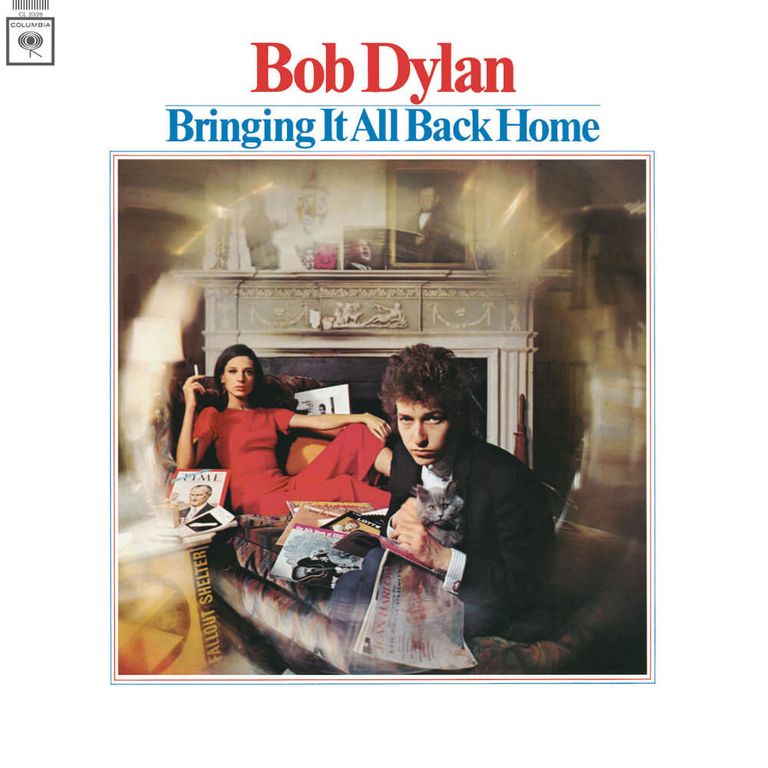
Ironically, Bringing It All Back Home was very unfamiliar territory for Dylan. After four albums of hard-hitting protest songs and folk ballads, he took a left turn and switched to rock ‘n’ roll.
The first half of Bringing It All Back Home is a crashing, thumping performance of first-rate rock songs, beginning with inimitable “Subterranean Homesick Blues”. In this tour-de-force of vehement folk abandonment, Dylan talks proto-rap style through four quickfire verses, punctuated by delicious blasts on his harmonica.
The second half of the record is a far less ferocious affair (there are no drums or loud guitars), featuring a run of four near-perfect songs. “Mr. Tambourine Man” is the best one there — made beautiful by Bruce Langhorne’s delicate accompaniment on electric guitar — but it’s in excellent company. Lyrically speaking, things don’t get much better than the nihilistic poetry of “It’s Alright Ma (I’m Only Bleeding)”.
3. Highway 61 Revisited (1965)

With “Like a Rolling Stone” at the start and “Desolation Row” at the end, no Dylan album (or, perhaps, any album) wields better bookends than Highway 61 Revisited. Bizarrely, “Like a Rolling Stone” started out as a 20-page poem (‘a long piece of vomit’, as Dylan described it) before becoming a brilliant, sneering slice of rock ‘n’ roll.
At the other end of the record, “Desolation Row” is an entirely different kettle of fish, comprising 11 glorious minutes of ethereal lyrics, Charlie McCoy’s sublime improvisations on acoustic guitar, and two blistering harmonica solos at the end. Dylan populates the song with an ambitiously wide-ranging cast of characters, including Biblical figures, eminent poets, English outlaws, American actresses, and Shakespearean heroes.
At the heart of the album is “Ballad of a Thin Man”, Dylan’s fiery attack on a certain ‘Mr Jones’. He plays lead piano in this song, slamming his way through sombre chords and lampooning his target. It’s brilliant stuff (and Dylan’s first song to feature a middle eight). After Highway 61 Revisited, Dylan would never get rock so right again.
Read the full Audioxide review of Highway 61 Revisited →
2. Blood on the Tracks (1975)

It’s fascinating what marital estrangement can do for your creativity. In 1975, a year after the passable Planet Waves and with his marriage to Sara Lownds on the rocks, Dylan released one of his greatest records. Blood on the Tracks is a stunningly beautiful, mostly stripped back album, comprising ten outstanding songs that are all as good as each other. Many people have assumed the album is autobiographical (Dylan’s son, Jakob, has described the songs as ‘my parents talking’), but Dylan himself has quashed the idea, claiming that it was inspired by the short stories of Anton Chekhov.
Either way, Blood on the Tracks is a far cry from Dylan’s esoteric lyrics of the 1960s, focusing almost entirely on the painful erosion of love. Some songs deal tenderly with the subject, such as the captivating “If You See Her, Say Hello”, while others take a more bitter approach, particularly the indomitable “Idiot Wind”, which Dylan practically howls his way through. By the final few verses of the album closer, “Buckets Of Rain”, Dylan sounds totally spent, as if he’s just completed some kind of catharsis.
1. Blonde on Blonde (1966)

This is Dylan’s magnum opus: a sprawling double album of coruscating folk-rock utterly unlike anything else on record. More than a decade after its release, Dylan himself reflected: ‘The closest I ever got to the sound I hear in my mind was … in the Blonde on Blonde album. It’s that thin, that wild mercury sound. It’s metallic and bright gold, with whatever that conjures up’.
To realise the sound in his mind, Dylan took an unconventional route; he went to Nashville and hired country musicians to play a rock album. The record is a brilliantly versatile mix of bluesy, folky rock ‘n’ roll, opening with the raucous, brass-backed “Rainy Day Women #12 & 35” and closing with the enchanting carnival music of “Sad Eyed Lady of the Lowlands”. Dylan’s lyrics oscillate between the visionary and mystifying to the downright bawdy, colouring the record with colloquialisms, poetic expressions, and dozens of eccentric characters.
If there’s one song that lifts *Blonde on Blonde *above Blood on the Tracks, it’s “Visions Of Johanna” — the surreal, seven-minute ramblings of a man utterly incapable of taking his mind off Johanna. Backed by Joe South’s rhythmically perfect bassline and Kenny Buttrey’s understated drumming, Dylan drawls his way through the greatest lyrics of his career, stopping only for flourishes on his harmonica. Not many musicians have mastered the art of the double album, but Blonde On Blonde is a decent template to follow.

Related Posts
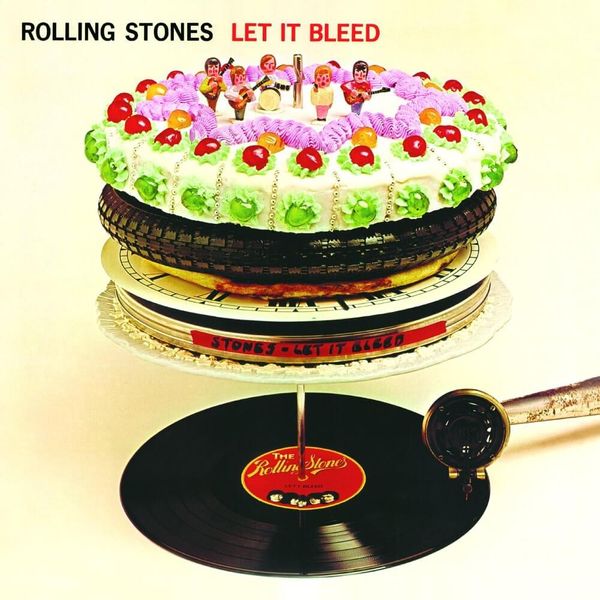
Let It Bleed // The Rolling Stones

Rough and Rowdy Ways // Bob Dylan

Highway 61 Revisited // Bob Dylan

